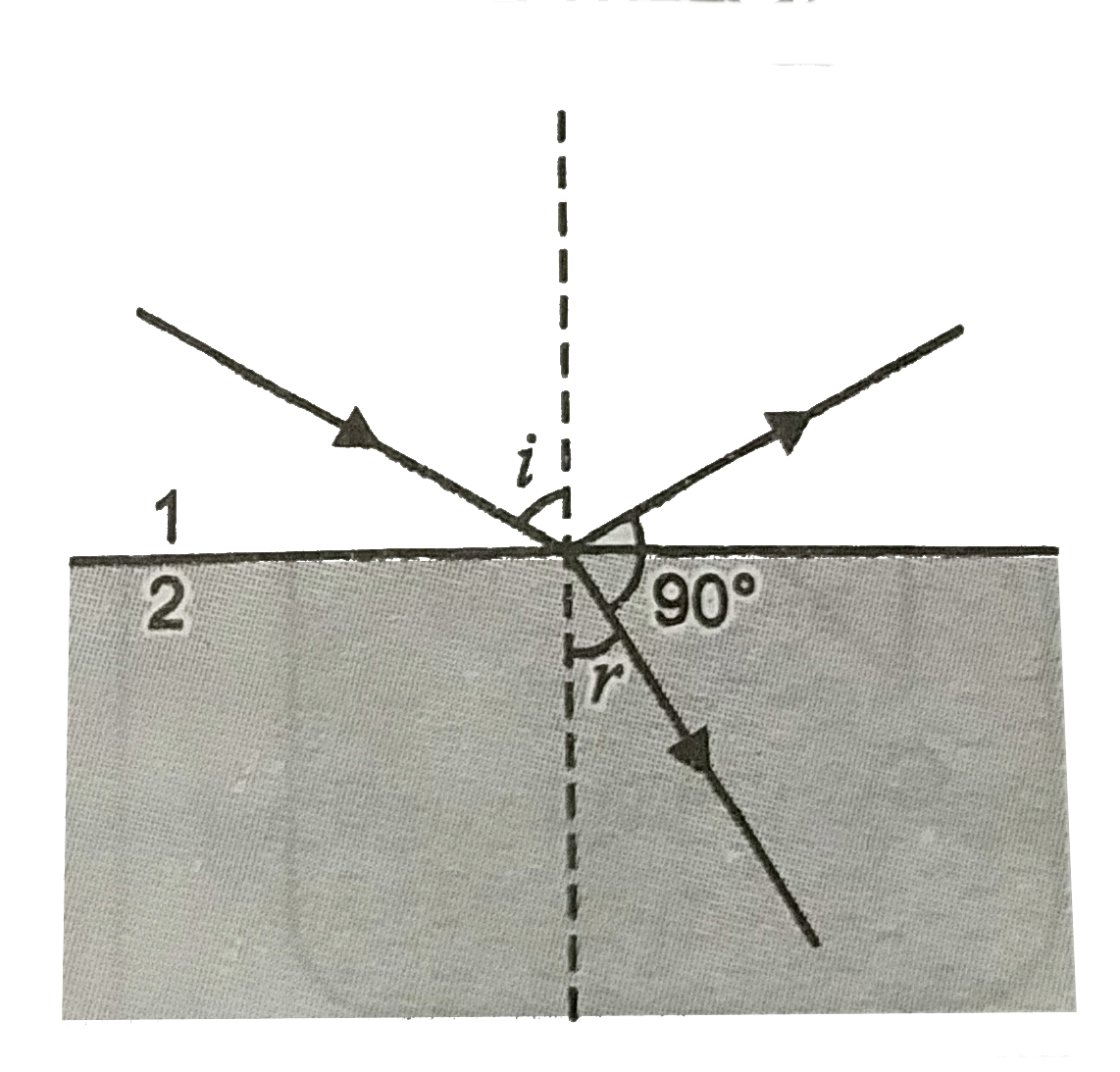When monochromatic, light is incident on a surface separating two media, the reflected and refracted light both have the same frequency as the incident frequency. Explain why?
Reflaction and refraction arise through interaction of incident light with the atomic constituents of matter. Atoms may be viewed as oscillators, which take up the frequency of the external agency (light) and undergo forced oscillations. The frequency of oscillation. Thus, the frequency of scattered light equals the frequency of incident light.
Topper's Solved these Questions
Similar Questions
(a) When monochromatic light is incident on a surface separating two media, the reflected and refracted ligth both have the same frequency as the incident frequency. Explain why ?
(b) When light travels from a rarer to a denser medium, it loses speed. Does the reduction in speed imply a reduction in energy carried by the light wave ?
( c) In the wave picture of light, intensity of ligth is determined by the square of amplitude of wave. What determines the intensity of light in teh photon picture of light ? (NCERT Solved Example)
View SolutionWhen monochromatic light is incident on a surface separating two media, the reflected and refracted light both have the same frequecy as the incident frequecy. Explain why ?
View Solution
Knowledge Check
Assertion : When monochromatic light is incident on a surface separting two media, the reflected and refracted light both have the same frequency as the incident frequency.
Reason: The frequency of monochromatic light depends on media.AIf both assertion and reason are true and\ reason is a correct explanation of the assertionBIf both assertion and reason are true but the reason is not a correct explanation of assertion.CIf assertion is true but reason is false.DIf assertion is false but reason is trueA: When monochromatic light is incident on a surface separating two media, the reflected and refracted light both have the same frequency as the incident frequency.
R: At any interface between the two media , the electric (and magnetic) fields must satisfy certain boundary conditions for all times and frequency determines the time dependence of fields.AIF both Assertion & Reason are true and the reason is the correct explanation of the assertion, then mark (1).BIf both Assertion & Reason are true but the reason is not the correct explanation of the assertion, then mark(2)CIF Assertion is true statement but Reason is false then mark(3)DIf both Assertion and Reason are false statements, then mark (4)Assertion :- When monochromatic light is incident on a surface separating two medium, the reflected and refracted light has same frequency as incident light.
Reason :- Reflection and refraction arise through interaction of incident light with atoms of matter and atoms act as oscillator which takes up frequency of incident light and undergoes forced oscillation and scatters light of same frequency.AIf both Assertion & Reason are True & the Reason is a correct explanation of the Assertion.BIf both Assertion & Reason are True but Reason is not a correct explanation of the Assertion.CIf Assertion is True but the Reason is False.DIf both Assertion & Reason are False.
Explain the following giving reasons :
(i) When monochromatic light is incident on a surface separating two media, the reflected and refracted light both have the same frequency as the incident frequency.
(ii) When ligjt travels from a rarer to a denser medium, the speed decreases. Does this decrease in speed imply a reduction in the energy carried by the wave ?
(iii) In the wave picture of light, intensity of light is determined by the square of the amplitude of the wave. What determines the intensity in the photon picture of light ?
View SolutionAssertion :- When monochromatic light is incident on a surface separating two medium, the reflected and refracted light has same frequency as incident light.
Reason :- Reflection and refraction arise through interaction of incident light with atoms of matter and atoms act as oscillator which takes up frequency of incident light and undergoes forced oscillation and scatters light of same frequency.
View SolutionShow that when a light beam is incident on a refractive surface at the polarising angle, the reflected and refracted beams are mutually perpendicular to each other.
View SolutionLight incident on a surface separating two media is partly reflected and party refracted as shown in Fig. Then :
 .
.
View SolutionWhen a ray of monochromatic light is incident obliquely on the interface of two media,
View Solution
